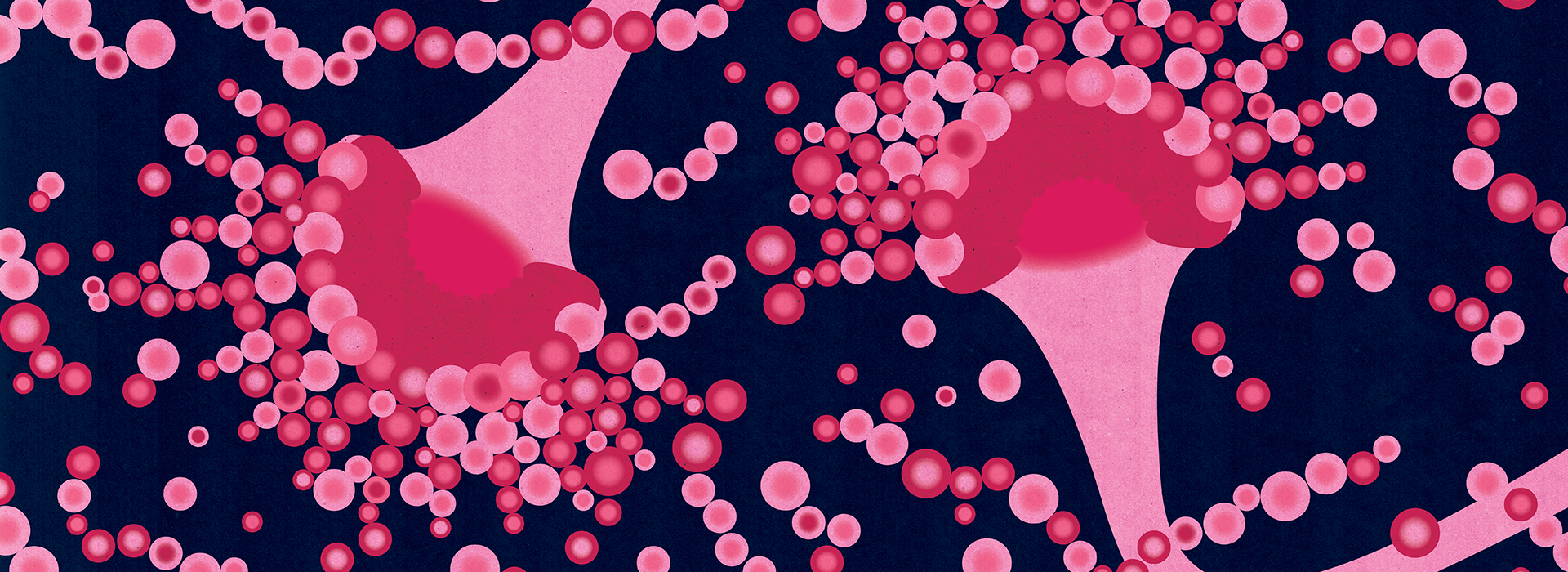By: Jon Farrow
5 Nov, 2019

CIFAR fellow Hailing Jin has uncovered the details of a chilling plot to silence opposition and subvert resistance in the fungal kingdom.
A long-hidden evolutionary war has been raging between plants and fungi for millions of years, with unconventional weapons and high stakes.
Hailing Jin, a CIFAR fellow in the Fungal Kingdom: Threats & Opportunities program and professor at the University of California Riverside, has uncovered the fascinating details of this battle, and has developed techniques to make sure the crops we rely on emerge victorious.
The war started millions of years ago, but the story of its discovery starts in 1998. In that year, Andrew Fire and Craig Mello published work showing that small snippets of genetic material in the form of RNA can interfere with cellular processes and stop genes from being expressed. This “RNA interference,” which won Fire and Mello a Nobel prize in 2006, is now understood to be fairly common within organisms. It helps them grow, develop, and fight infection.

The third and fifth rows of this diagram show fruits and vegetables protected by a specially-designed small RNA spray. From Jin’s seminal 2016 Nature Plants paper.
Hailing Jin and her collaborators made a breakthrough in 2013 when they discovered that plants and fungi are using this RNA interference mechanism across species to hijack the processes of infection and immunity. Jin discovered that some ingenious pathogenic species of fungi, like Botrytis cinerea, send small RNA spies into a host’s cells to disrupt the plant’s defence responses. The fungus hijacks the plant’s normal RNA interference machinery, and uses it to silence the genes that are needed to protect the plant against infection.
“This RNA-based co-evolutionary arms race has just recently been recognized,” says Jin.
Plants, for their part, don’t sit idly by. Jin and others in her field have shown that plants also engage in this type of cellular espionage. They send out tiny capsules—extracellular vesicles— filled with small RNA spies specially designed to silence the genes of the pathogens that infect them.
This type of interspecies conflict is qualitatively different from sharp thorns or noxious poisons, the type of weapons we normally associate with plants and fungi, but researchers are realizing RNA interference may be just as important.
“This RNA-based co-evolutionary arms race has just recently been recognized,” says Jin. Now that it has, the floodgates are opening. “After we discovered it, there are more studies in many different systems to show that this actually is pretty widely spread.”
With this new battleground between pathogens and hosts uncovered, Jin and her collaborators started to ask whether humans could take a side.
A recent study estimates 20-30% of global crops are lost every year to pathogens, pests, and parasites. The direct risks to humans are real too, with deadly fungal pathogens like C. auris spreading quickly in hospital wards.
Most fungicides work by targeting a particular amino acid or section of a protein or enzyme, but they tend to be very specific. One tiny mutation by the fungus, and it escapes danger and proliferates.
“There is an urgent need for us to develop new antifungal drugs and new fungicides”
“A recent study from Sarah Jane Gurr’s lab showed that many fungal pathogens have developed resistance or partial resistance to almost all of the commonly used antifungal drugs on humans and animals (and fungicide in plants and crops),” warns Jin. “So this is a kind of emergency. There is an urgent need for us to develop new antifungal drugs and new fungicides. An RNA-based approach to control fungal pathogens is one promising and innovative strategy of the future.”
Jin and her colleagues want to provide plants with RNAs specially designed in the lab to defend against pathogens. Like molecular hackers and assassins, they would have the tools to infiltrate a pathogen’s system and turn off the genes that make it dangerous. This can be accomplished by genetically modifying the plants to produce these small RNAs themselves, or by spraying the leaves with the lab-designed RNAs.
Both work, but come with tradeoffs. A plant that could produce its own pathogen-hacking RNA would need much less pesticide. On the other hand, getting approval and broader public acceptance for genetically modified organisms can be challenging. The European Union, for example, has restrictive limitations on genetic modification. A topical spray would get around those regulations and is effective in a lab setting, but RNA only lasts a few days in the field before degrading so near-constant reapplication would be required. There is hope on this front, though: Jin’s lab, inspired by the extracellular vesicles they discovered plants use to deliver their hackers, has recently developed artificial vesicles which can protect the RNA for weeks.
This co-evolutionary arms race, with plants and fungi developing ever more sophisticated ways to infect and resist, shows no signs of slowing down. But by understanding how the war is being fought, researchers like Jin in CIFAR’s Fungal Kingdom: Threats and Opportunities program hope to turn the tide in favour of the plants humans rely on and apply the lessons from the farm field to other settings, like the clinic.
Hailing Jin is one of CIFAR’s newest fellows in the Fungal Kingdom: Threats and Opportunities program, which brings together a community of mycologists, ecologists, doctors, bioinformaticians, and microbiologists to understand the dangers and potentials of the often forgotten kingdom Fungi.
“It’s a very comprehensive group of scientists being brought together,” says Jin. “I think the collaboration will be very innovative and will have a huge impact. I’m extremely excited and honoured to be part of this team.”
Read more about the Fungal Kingdom: Threats and Opportunities program here.